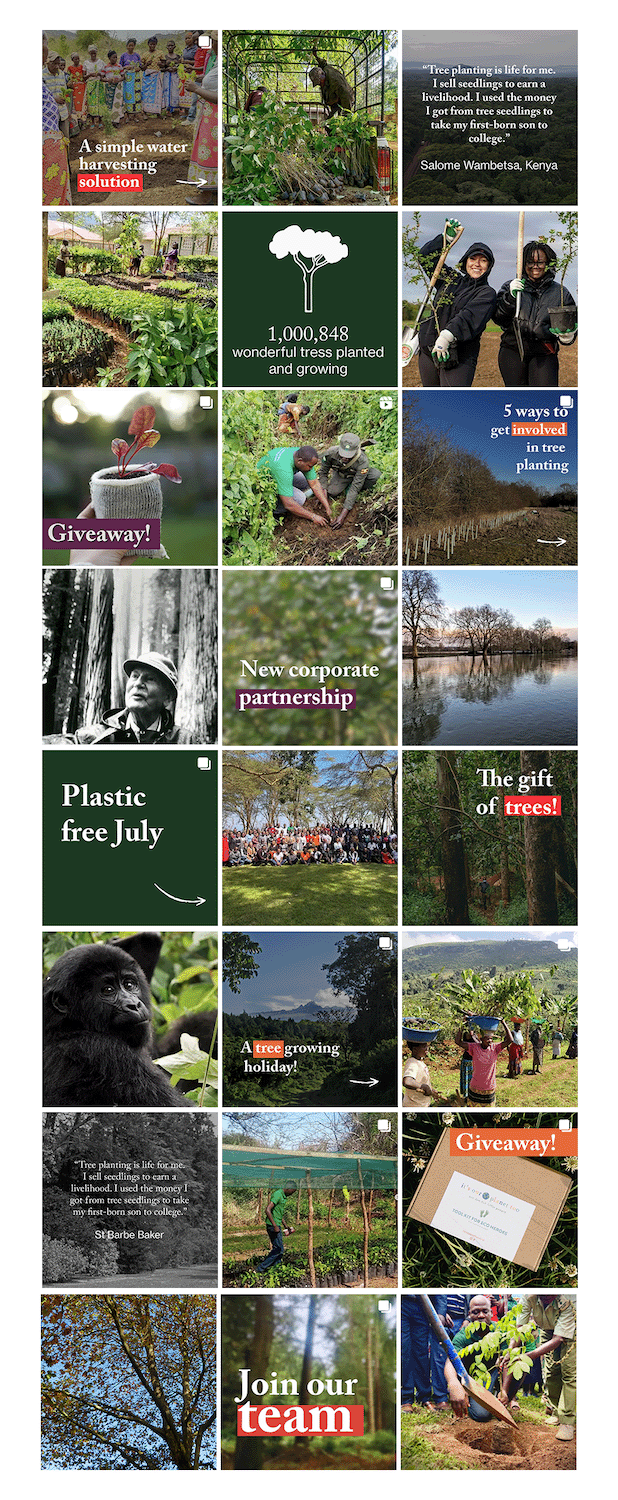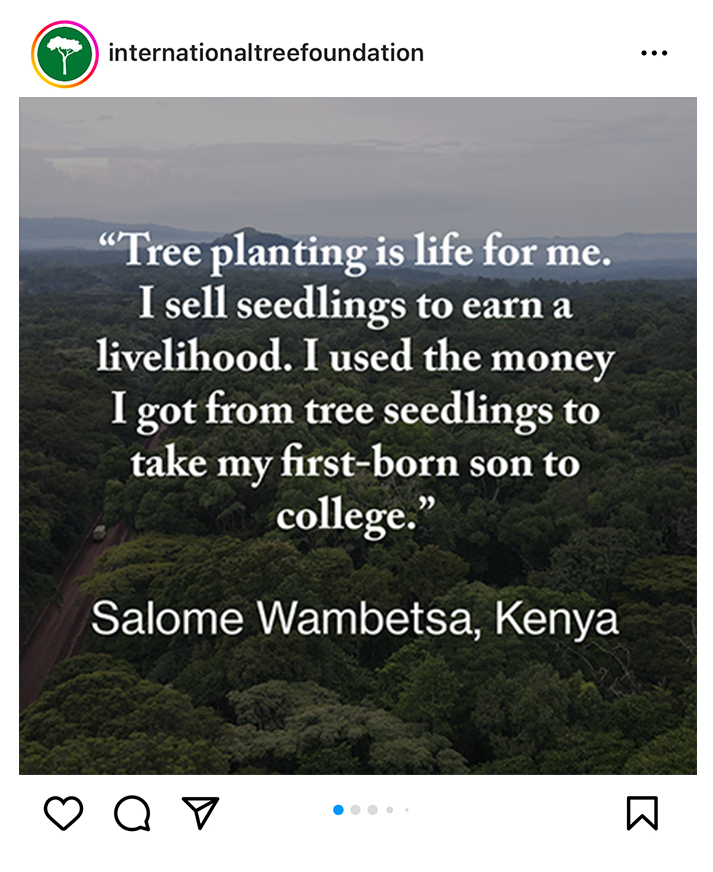
You may already have an active Instagram account, or be thinking about setting one up for your brand. We recently worked with the communications team at International Tree Foundation (ITF) to elevate their Instagram presence. In this article we share how our approach can support teams to achieve impact through strategic content planning and visual identity.
Assessing the Instagram grid layout
While content planning with ITF, we agreed that their Instagram grid wasn’t showcasing their amazing work to its full potential. Therefore, we conducted a review of ITF’s current Instagram grid design and identified the need for enhanced content types and styles, which would also underpin strategy and content planning.
Although these principles can be applied to other social media channels, we recommend applying them to Instagram, as it provides a space where all the content can be viewed as a collective. While it’s important that posts work individually within feeds, they also need to work together to complement each other on the grid view.
Having a clear brand presence on Instagram is important for ITF as it elevates the great work that the charity does and moves audiences to participate in environmental stewardship. Our review went deeper than visual design by interrogating the purpose of posts, the alignment with brand mission and values, while keeping balance with audience needs.
We used Miro to support our discovery phase, to benchmark charitable organisations in similar sectors, as well as consumer brands. We also mapped out the different content types to inform our recommendations for content planning.

New content types and styles
We developed new styles for social media posts which incorporate existing brand elements. The Instagram designs follow ITF’s brand guidelines and include content types such as ‘quotes, announcements, giveaways, blogs, impact graphics, history, who we are, tips, partnerships, and lifestyle’. As ITF evolves, we may need to add more content types, but this is a great starting point.
For ITF, displaying their work through impactful images is crucial. However as it’s not always possible to lead with a very strong image, incorporating text within posts is necessary to convey information effectively. We suggested using image posts every other post.
The new content styles allow us to add urgency and gravitas to our call to action posts while balancing uplifting positive posts that celebrate the great work that is happening. Communications and Engagement Manager – International Tree Foundation
Brand consistency across platforms
To ensure that your social media posts have a consistent look and feel, it’s important to use your brand’s designated colours and fonts. By doing so, each post will conform to the right visual style, creating a cohesive brand identity. To help with this process, you can create a grid guideline to serve as a reference for the specific design elements that should be included in each post. By following this guideline, you can produce visually consistent posts that accurately represent your brand. These guidelines are especially helpful when multiple people or teams are creating content for social media, as they can ensure a collective look.
Every brand invests time and money in creating brand guidelines, so why stop there? It’s important to also develop grid and social media guidelines to ensure consistency and effectiveness across all platforms.
The work that famille did not only looks good visually, it’s also helped us focus our posts and our strategy. It’s helped us talk about subjects on the fringes of our content by helping them sit more comfortably with our brand and work. International Tree Foundation
Accessibility standards
It is crucial to ensure that social media posts meet accessibility standards. This is important because it enables people with disabilities to access and engage with the content. By making social media posts accessible, we can ensure that everyone has an equal opportunity to participate in online conversations and stay informed. The design and appearance of a post should not take priority over its accessibility. While ALT tags can be used to make the post more accessible, we shouldn’t solely rely on them.
Our work also upholds an important process around working to accessibility standards to provide a good user experience, which includes contrast checks before applying the suggested styles.
Purpose and content planning
Social media content planning is a process that involves developing a strategy to create and share content, on various social media platforms. The purpose of this process is to ensure that the content is well-crafted and aligned with the brand’s message and goals, as well as audience needs. The content planning process involves research to determine the target audience, benchmarking against other brands, identifying the best social media platforms to use, and creating a content calendar. The content calendar outlines the topics, themes, and formats of the content that will be shared on each platform. It also presents an opportunity to consider the purpose of the content and that it’s aligned with the brand’s purpose and values.
By planning the content, there is always something to share, and it is more likely that the content will be shared effectively and consistently. This, in turn, can help to increase efficiency within the team, engagement, and reach, and ultimately, achieve the objectives set out in the social media strategy.
Planning ahead of time can affect the authenticity of content sharing. We made sure the brand guidelines for ITF were clear, without restricting the flow of posts. So if there is a spontaneous need to post an update, there is enough flex to do so without affecting the grid aesthetic.
You may like to read more about the results in our case study

